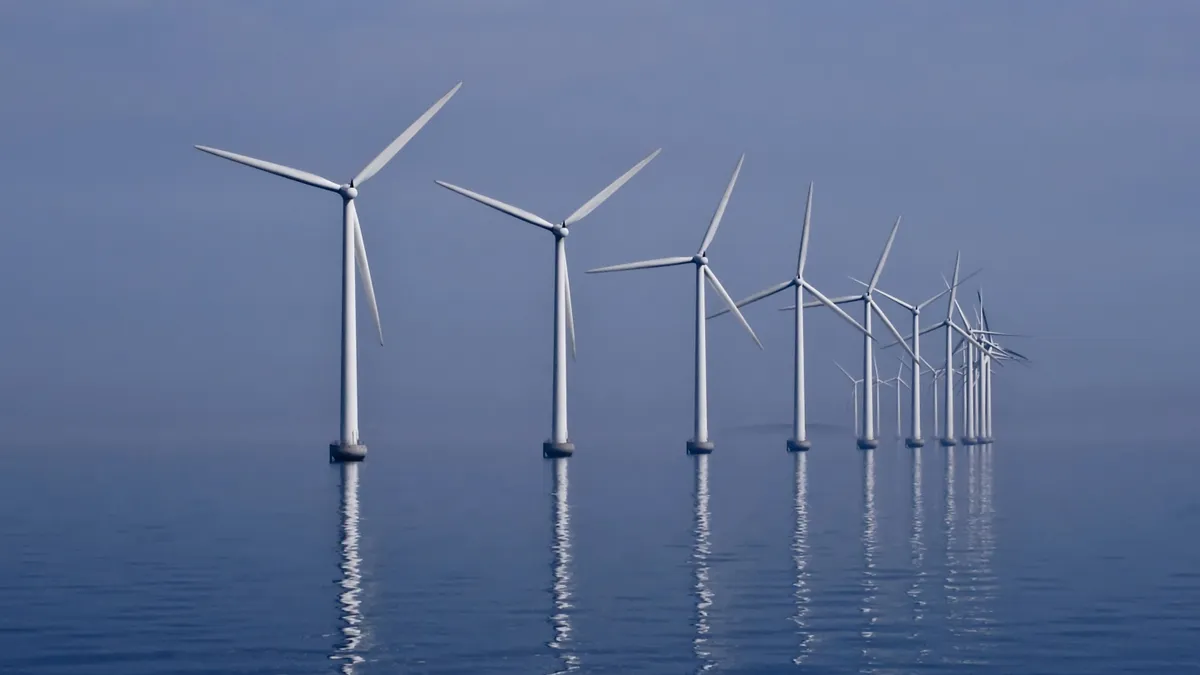Dive Brief:
- Staff of the Ohio Power Siting Board (OPSB) have given tentative approval to the first offshore wind project in the Great Lakes, but developers will still need to take a range of mitigation measures and prove the turbines will not harm birds or bats before any final sign-off.
- Lake Erie Energy Development Co.'s (LEEDCo) Icebreaker project would include six wind turbines for a total generating capacity of up to 20.7 MW in Lake Erie, north of Cleveland.
- The wind turbines would interconnect with the Cleveland Public Power transmission system via a 138 kV line. Developers say the interconnection study process is complete, and rights have been secured to participate in the PJM market. A 12-mile submerged transmission cable will be considered separately.
Dive Insight:
The United States' offshore wind energy industry is just getting started, so there are many firsts to be had. LEEDCo says its project is "the first offshore wind facility in the Great Lakes, the first freshwater wind farm in North America, and only the second offshore wind project in the entire U.S."
At the moment, the only offshore facility in U.S. waters is the 30 MW Block Island Wind Farm off Rhode Island. So while Icebreaker Wind could be the second, there are other projects under development.
But its status as a first mover in the Great Lakes is significant because of the large offshore wind potential there and particularly as other developers catch a glimpse of what they will face at the OPSB, where the discussion around Icebreaker has gone on for five years.
OPSB staff, in its analysis, concluded that while there would be permanent impacts from the project, "the applicant's efforts during the extensive site selection process, as well as their commitments during facility construction and operation, would reduce these impacts."
There is broad interest in offshore wind potential, including from the federal government. Two years ago, LEEDCo was awarded $13.3 million by the U.S. Department of Energy for the Icebreaker project and the opportunity to win two further $13.3 million development grants.
Northeast states have generally been leading the way for new U.S. projects. New Jersey has a goal of developing 3,500 MW of offshore wind capacity by 2030 while New York is targeting 2,400 MW of offshore wind, also by 2030.















